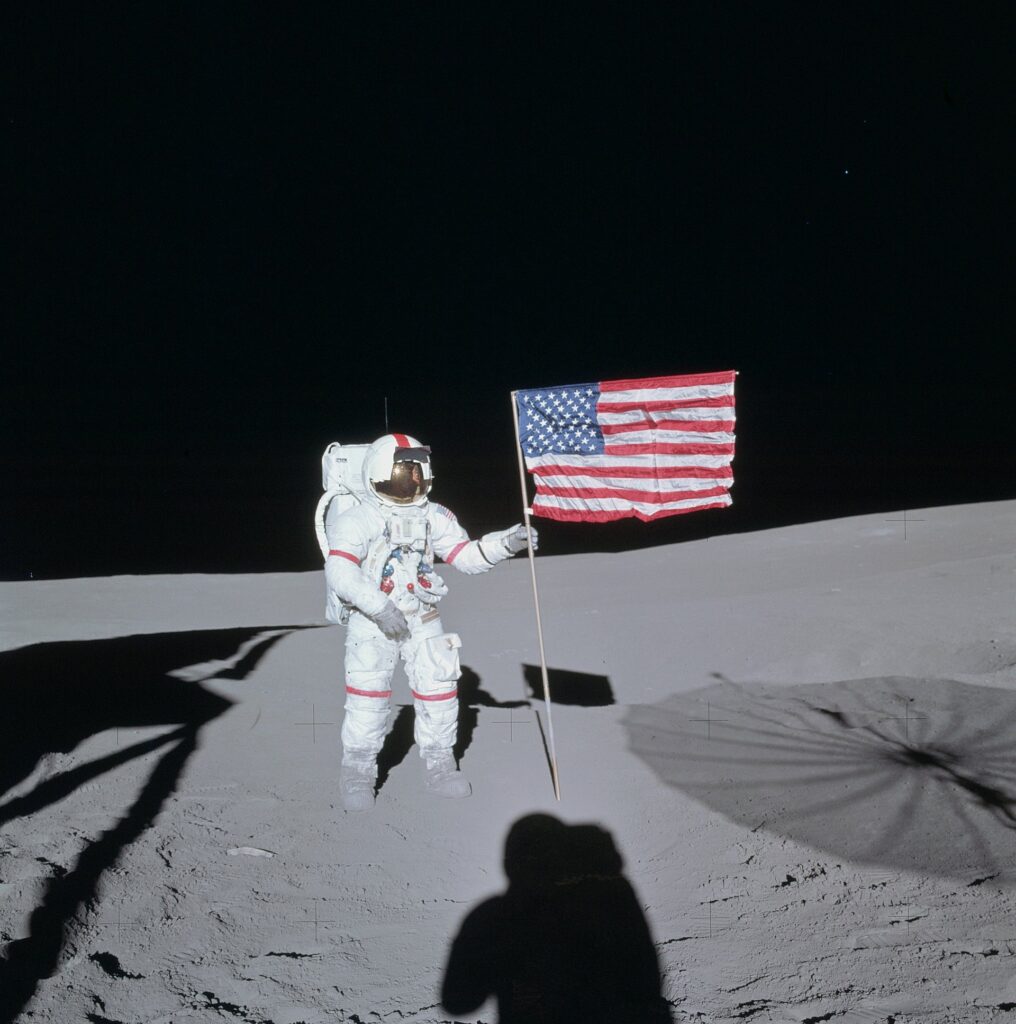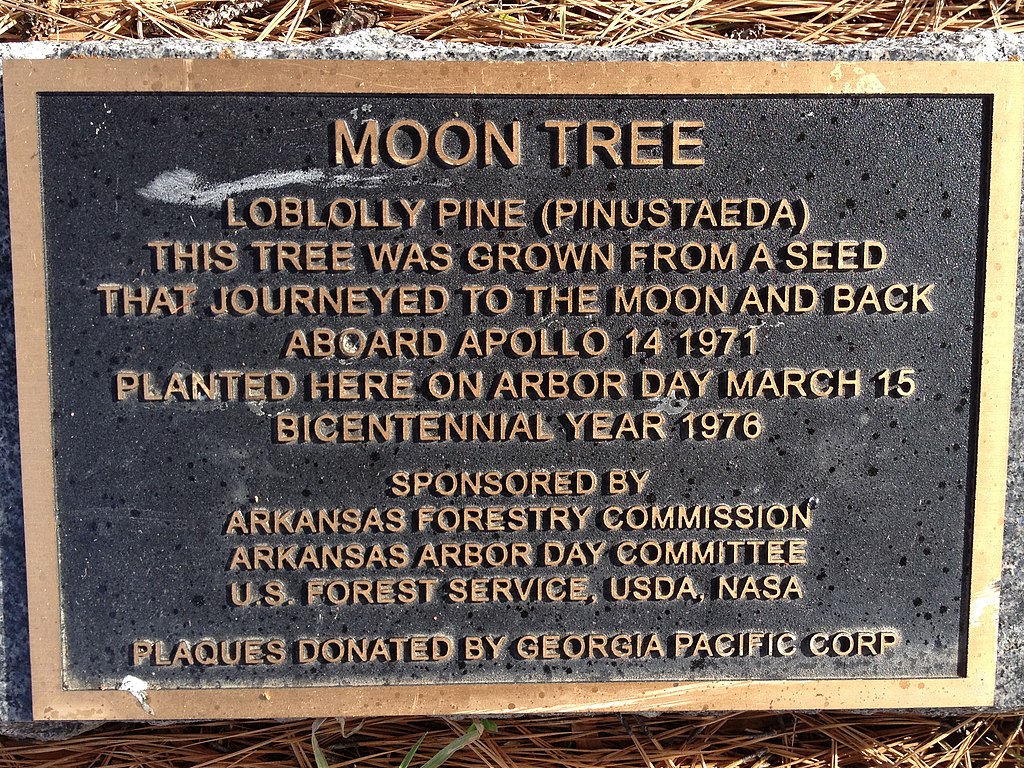Apollo 14 was launched in 1971 and on board was a former U. S. Forest Service smokejumper Stuart Roosa.
You don’t know him. You’ve been too busy thinking about Alan Shepard and Edgar Mitchell who walked on the moon for this third trip to the lunar surface. Those two got all the press and all the glory.

But for the 33 hours that Shepard and Mitchell spent on the lunar surface walking around, taking pictures, hitting golf balls, and hanging out in the lunar module, Roosa was in solo orbit around the moon. And he had about 2000 tree seeds with him, a gift from the Forestry Service: loblolly pine, sycamore, sweetgum, redwood, and Douglas fir.
The idea was to bring those seeds home, plant them, and see if anything weird happened. Although this was ostensibly a research project, it was also seen as a fun public relations thing.
The men got home just fine, but there was a little mishap during the routine decontamination process and the container with the tree seeds was blown apart scattering them all over the command module. There were concerns that this would ruin the experiment, but the seeds were collected and a few of them were planted in Houston to see if they would still sprout.
They did, and so the remaining seeds were sent to a couple of facilities, one in Gulfport, Mississippi, and the other in Placerville, California. The seeds were germinated and some cuttings of these “moon trees” were given away as gifts. Moon saplings were planted a few years later in area parks or the grounds of some government agency or another with the requisite fanfare as people commemorated the American bicentennial and our exploration of the Final Frontier. Then-president Gerald Ford called the trees “living symbol[s] of our spectacular human and scientific achievements.”
But, amazingly, nobody maintained any records of where these trees ended up or how they eventually fared. The experiment and the planting celebrations were simply forgotten.
In 1996, a third-grade teacher, Joan Goble, was with her students when they found a tree with a plaque nearby identifying it as a “moon tree.”

She sent a letter to NASA to learn more and her note ended up on the desk of Dave Williams, an employee who knew nothing about the trees but became curious. He dug up some old news clippings and wondered how these moon trees had simply vanished from public consciousness. He started a webpage to compile any information that people could bring him about the location of any existing trees. And to date, he’s got about 100 listings from around the world.
Stuart Roosa’s daughter, Rosemary, also started the Moon Tree Foundation with the idea of honoring her father’s legacy by uniting humanity through the planting of at least one moon tree in each country.
With the revived interest in moon trees came some renewed propagation efforts and now you can get your own moon tree here.
It also turns out there’s one about 235 miles away from me, a moon redwood in San Luis Obispo. Anybody up for a field trip?
Leave a comment below for posterity or join us in the D&T Chautaqua Discord to discuss this post with other adventurous spirits from around the world.
Yes totally up for it! Would be fun if it was a new moon day too
Love this idea. Maybe find a new moon that falls on a weekend, head out there, picnic under/near the moon tree, and then head over to the coast to look for the new moon! Checking lunar calendar now!
I am in.!